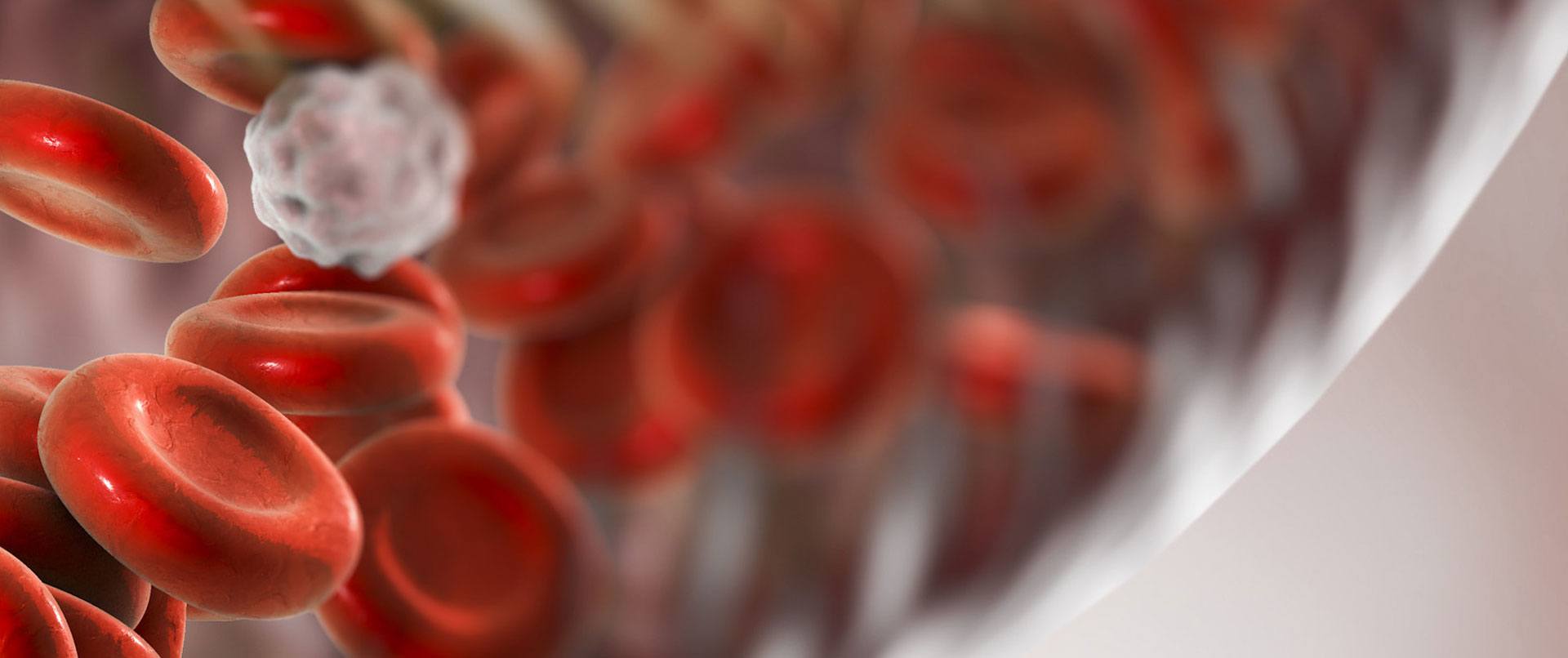
Immunoengineering
Through the application of engineering princples, immunoengineering seeks to understand and controlably modulate the body’s immune response to diseases and injury towards tissue regeneration and functional recovery.
Researchers
-
 Eugene ChenMedicine
Eugene ChenMedicine -
 Maria CoronelEngineering
Maria CoronelEngineering -
 Joseph DeckerDentistry
Joseph DeckerDentistry -
 Katherine GallagherMedicine
Katherine GallagherMedicine -
 Stephen KempMedicine
Stephen KempMedicine -
 Laurie McCauleyDentistry
Laurie McCauleyDentistry -
 Geeta MehtaEngineering
Geeta MehtaEngineering -
 James MoonPharmacy
James MoonPharmacy -
 Aaron MorrisEngineering
Aaron MorrisEngineering -
 Deepak NagrathEngineering
Deepak NagrathEngineering -
 Indika RajapakseMedicine
Indika RajapakseMedicine -
 Lonnie SheaEngineering
Lonnie SheaEngineering -
 Jae-Won ShinDentistry
Jae-Won ShinDentistry
Select Publications
Chen et al. Suppression of Vascular Macrophage Activation by Nitro-Oleic Acid and its Implication for Abdominal Aortic Aneurysm Therapy. Cardiovasc Drugs Ther. 2021.
Chen et al. MiCas9 increases large size gene knock-in rates and reduces undesirable on-target and off-target indel edits. Nat Commun. 2020.
Chen et al. Impact of donor blood type on outcomes after prolonged allograft ischemic times. J Thorac Cardiovasc Surg. 2022.
Chen et al. Genetically Modified Rabbits for Cardiovascular Research. Front Genet. 2021.
Chen et al. Risk factors for heart transplant survival with greater than 5 h of donor heart ischemic time. J Card Surg. 2021.
Chen et al. Exosomes from adipose-derived stem cells alleviate myocardial infarction via microRNA-31/FIH1/HIF-1α pathway. J Mol Cell Cardiol. 2022.
Chen et al. RNA sequencing reveals perivascular adipose tissue plasticity in response to angiotensin II. Pharmacol Res. 2022.
Chen et al. Induction of glutathione biosynthesis by glycine-based treatment mitigates atherosclerosis. Redox Biol. 2022.
Chen et al. BAF60c prevents abdominal aortic aneurysm formation through epigenetic control of vascular smooth muscle cell homeostasis. J Clin Invest. 2022.
Chen et al. Myeloid TM6SF2 Deficiency Inhibits Atherosclerosis. Cells. 2022.
Chen et al. Gasdermin D Deficiency in Vascular Smooth Muscle Cells Ameliorates Abdominal Aortic Aneurysm Through Reducing Putrescine Synthesis. Adv Sci (Weinh). 2023.
Chen et al. DT-109 ameliorates nonalcoholic steatohepatitis in nonhuman primates. Cell Metab. 2023.
Chen et al. PRDM16 deficiency in vascular smooth muscle cells aggravates abdominal aortic aneurysm. JCI Insight. 2023.
Chen et al. Circular RNA as Therapeutic Targets in Atherosclerosis: Are We Running in Circles?. J Clin Med. 2023.
Chen et al. SWI/SNF Complex in Vascular Smooth Muscle Cells and Its Implications in Cardiovascular Pathologies. Cells. 2024.
Chen et al. Bioengineered vascular grafts with a pathogenic TGFBR1 variant model aneurysm formation in vivo and reveal underlying collagen defects. Sci Transl Med. 2024.
Chen et al. Inhibition of hepatic oxalate overproduction ameliorates metabolic dysfunction-associated steatohepatitis. Nat Metab. 2024.
Chen et al. The first in-human study to evaluate the antiplatelet properties of the clopidogrel conjugate DT-678 in acute coronary syndrome patients and healthy volunteers. Br J Pharmacol. 2025.
Chen et al. Neutrophil prime unique transcriptional responses in intestinal organoids during infection with nontyphoidal Salmonella enterica serovars. mSphere. 2024.
Chen et al. Promotion or inhibition? This is a question in gene editing. Mol Ther. 2025.
Chen et al. Restoring Vascular Smooth Muscle Cell Mitochondrial Function Attenuates Abdominal Aortic Aneurysm in Mice. Arterioscler Thromb Vasc Biol. 2025.
Chen et al. IDOL Deficiency Inhibits Cholesterol-Rich Diet-Induced Atherosclerosis in Rabbits. Arterioscler Thromb Vasc Biol. 2025.
Chen et al. Erratum: NAD+ rescues aging-induced blood-brain barrier damage via the CX43-PARP1 axis (Neuron (2023) 111(22) (3634–3649.e7), (S0896627323006220), (10.1016/j.neuron.2023.08.010)). Neuron. 2025.
Chen YE et al. Patient-specific cardiovascular progenitor cells derived from integration-free induced pluripotent stem cells for vascular tissue regeneration. Biomaterials. 2015.
Chen YE et al. Cell-free 3D scaffold with two-stage delivery of miRNA-26a to regenerate critical-sized bone defects. Nat Commun. 2016.
Chen YE et al. RS-1 enhances CRISPR/Cas9- and TALEN-mediated knock-in efficiency. Nat Commun. 2016.
Chen YE et al. Direct Reprogramming of Fibroblasts Into Smooth Muscle-Like Cells With Defined Transcription Factors. Arterioscler Thromb Vasc Biol. 2018.
Chen YE et al. Roles of Perivascular Adipose Tissue in Hypertension and Atherosclerosis. Antioxid Redox Signal. 2021.
Chen YE et al. In Vitro Lineage-Specific Differentiation of Vascular Smooth Muscle Cells in Response to SMAD3 Deficiency: Implications for SMAD3-Related Thoracic Aortic Aneurysm. Arterioscler Thromb Vasc Biol. 2020.
Chen YE et al. Phenotypes of CF rabbits generated by CRISPR/Cas9-mediated disruption of the CFTR gene. JCI Insight. 2021.
Chen YE et al. Human apolipoprotein A-II reduces atherosclerosis in knock-in rabbits. Atherosclerosis. 2021.
Chen YE et al. Transcription factor EB regulates cardiovascular homeostasis. EBioMedicine. 2021.
Chen YE et al. KLF11 protects against abdominal aortic aneurysm through inhibition of endothelial cell dysfunction. JCI Insight. 2021.
Chen YE et al. Translating Cardiovascular Genomics to Clinical Practice. Cardiovasc Drugs Ther. 2021.
Chen YE et al. Integration of Transformative Platforms for the Discovery of Causative Genes in Cardiovascular Diseases. Cardiovasc Drugs Ther. 2021.
Chen YE et al. Improving the genome assembly of rabbits with long-read sequencing. Genomics. 2021.
Chen YE et al. Biomimetic tubular scaffold with heparin conjugation for rapid degradation in in situ regeneration of a small diameter neoartery. Biomaterials. 2021.
Chen YE et al. Regulatory variants in TCF7L2 are associated with thoracic aortic aneurysm. Am J Hum Genet. 2021.
Chen YE et al. Synthetic high-density lipoproteins delivering liver X receptor agonist prevent atherogenesis by enhancing reverse cholesterol transport. J Control Rel. 2021.
Kemp et al. Comparison of Outcomes of Spinal Accessory to Suprascapular Nerve Transfer Versus Nerve Grafting for Neonatal Brachial Plexus Injury. Orthopedics. 2022.
Kemp et al. The Muscle Cuff Regenerative Peripheral Nerve Interface for the Amplification of Intact Peripheral Nerve Signals. J Vis Exp. 2022.
Kemp et al. Regenerative peripheral nerve interface free muscle graft mass and function. Muscle Nerve. 2021.
Kemp et al. “Decreasing Postamputation Pain with the Regenerative Peripheral Nerve Interface (RPNI)”. Ann Vasc Surg. 2022.
Kemp et al. Ultraflexible and Stretchable Intrafascicular Peripheral Nerve Recording Device with Axon-Dimension, Cuff-Less Microneedle Electrode Array. Small. 2022.
Kemp et al. Pathophysiological and Neuroplastic Changes in Postamputation and Neuropathic Pain: Review of the Literature. Plast Reconstr Surg Glob Open. 2022.
Kemp et al. Ultrasound appearance of regenerative peripheral nerve interface with clinical correlation. Skeletal Radiol. 2023.
Kemp et al. Dermal Sensory Regenerative Peripheral Nerve Interface for Reestablishing Sensory Nerve Feedback in Peripheral Afferents in the Rat. Plast Reconstr Surg. 2023.
Kemp et al. Long-term upper-extremity prosthetic control using regenerative peripheral nerve interfaces and implanted EMG electrodes. J Neural Eng. 2023.
Kemp et al. Michigan special issue: 60 years of Michigan plastic surgery. Semin Plast Surg. 2024.
Kemp et al. Merging humans and neuroprosthetics through regenerative peripheral nerve interfaces. Semin Plast Surg. 2024.
Kemp et al. Pain hypersensitivity, sensorimotor impairment, and decreased muscle force in a novel rat model of radiation-induced peripheral neuropathy. J Peripher Nerv Syst. 2024.
Kemp SWP et al.The clinical significance of a swollen neuroma: A meaningful distinction or an incidental finding? Ann Palliat Med. 2020
Kushner et al. HCOO−aq degradation in droplets by OHaq in an atmospheric pressure glow discharge. J Phys D Appl Phys. 2023.
McCauley et al CCL2/CCR2 Signalling in Mesenchymal Stem/Progenitor Cell Recruitment and Fracture Healing in Mice. J Cell Mol Med. 2024.
McCauley et al. Anabolic actions of PTH in murine models: two decades of insights. J Bone Miner Res. 2021.
McCauley et al. Cross Talk Between Macrophages and Cancer Cells in the Bone Metastatic Environment. Front Endocrinol (Lausanne). 2021.
McCauley et al. Translating Science into Improved Health for All. J Dent Res. 2022.
McCauley et al. Anabolic actions of parathyroid hormone in a hypophosphatasia mouse model. Osteoporos Int. 2022.
McCauley et al. Caspase-9 driven murine model of selective cell apoptosis and efferocytosis. Cell Death Dis. 2023.
McCauley et al. The Role of Tumor Epithelial-Mesenchymal Transition and Macrophage Crosstalk in Cancer Progression. Curr Osteoporos Res. 2023.
McCauley et al. The effects of preosteoblast-derived exosomes on macrophages and bone in mice. J Cell Mol Med. 2024.
McCauley et al. Parathyroid hormone and trabectedin have differing effects on macrophages and stress fracture repair. Bone. 2024.
McCauley et al. Efferocytosis and Bone Dynamics. Curr Osteoporos Rep. 2024.
McCauley LK et al. Local pulsatile PTH delivery regenerates bone defects via enhanced bone remodeling in a cell-free scaffold. Biomaterials. 2017.
McCauley LK et al. Macrophages and skeletal health. Pharmacol Ther. 2017.
McCauley LK et al. Apoptosis-induced CXCL5 accelerates inflammation and growth of prostate tumor metastases in bone. J Clin Invest. 2018.
McCauley LK et al. Inflammatory bone loss associated with MFG-E8 deficiency is rescued by teriparatide. FASEB J. 2018.
McCauley LK et al. Clodronate-loaded liposome treatment has site-specific skeletal effects. J Dent Res. 2019.
McCauley LK et al. Regulation of heterotopic ossification by monocytes in a mouse model of aberrant wound healing. Nat Commun. 2020.
McCauley LK et al. Impact of COVID-19 on Life Experiences of Essential Workers Attending a Dental Testing Facility. JDR Clin Trans Res. 2021.
Mehta et al. Atovaquone: An Inhibitor of Oxidative Phosphorylation as Studied in Gynecologic Cancers. Cancers (Basel). 2022.
Mehta et al. The MEK1/2 pathway as a therapeutic target in high-grade serous ovarian carcinoma. Cancers (Basel). 2021.
Mehta et al. Injectable three-dimensional tumor microenvironments to study mechanobiology in ovarian cancer. Acta Biomater. 2022.
Mehta et al. Applications of Innovation Technologies for Personalized Cancer Medicine: Stem Cells and Gene-Editing Tools. ACS Pharmacol Transl Sci. 2023.
Mehta et al. ANTIMICROBIAL WOUND DRESSINGS FOR FULL-THICKNESS INFECTED BURN WOUNDS. Shock. 2024.
Mehta G et al. Personalized Medicine–Based Approach to Model Patterns of Chemoresistance and Tumor Recurrence Using Ovarian Cancer Stem Cell Spheroids. Clin Cancer Res. 2017.
Mehta G et al. Integrated cancer tissue engineering models for precision medicine. PLoS One. 2019.
Mehta G et al. Engineered 3D Model of Cancer Stem Cell Enrichment and Chemoresistance. Neoplasia. 2019.
Mehta G et al. Ovarian cancer stem cells and macrophages reciprocally interact through the WNT pathway to promote pro-tumoral and malignant phenotypes in 3D engineered microenvironments. J Immunother Cancer. 2019.
Mehta G et al. Compressive Stimulation Enhances Ovarian Cancer Proliferation, Invasion, Chemoresistance, and Mechanotransduction via CDC42 in a 3D Bioreactor. Cancers (Basel). 2020.
Mehta G et al. Personalized models of heterogeneous 3D epithelial tumor microenvironments: Ovarian cancer as a model. Acta Biomater. 2021.
Mehta G et al. Design and applications of surfaces that control the accretion of matter. Sci. 2021.
Moon et al. Oral nanomedicine for modulating immunity, intestinal barrier functions, and gut microbiome. Adv Drug Deliv Rev. 2021.
Moon et al. Generation of systemic antitumour immunity via the in situ modulation of the gut microbiome by an orally administered inulin gel. Nat Biomed Eng. 2021.
Moon et al. Efficacy of an ALDH peptide-based dendritic cell vaccine targeting cancer stem cells. Cancer Immunol Immunother. 2022.
Moon et al. Circulating Tumor DNA Kinetics Predict Progression-Free and Overall Survival in EGFR TKI–Treated Patients with EGFR-Mutant NSCLC (SWOG S1403). Clin Cancer Res. 2022.
Moon et al. Emerging Nanotechnologies and Microbiome Engineering for the Treatment of Inflammatory Bowel Disease. Mol Pharm. 2022.
Moon et al. Neutrophils and neutrophil extracellular traps in cancer: promising targets for engineered nanomaterials. Drug Deliv Transl Res. 2023.
Moon et al. Cancer stem cell antigen nanodisc cocktail elicits anti-tumor immune responses in melanoma. J Control Release. 2022.
Moon et al. Induction of T-helper-17-cell-mediated anti-tumour immunity by pathogen-mimicking polymer nanoparticles. Nat Biomed Eng. 2023.
Moon et al. STING agonist-loaded mesoporous manganese-silica nanoparticles for vaccine applications. J Control Release. 2023.
Moon et al. Unlocking the promise of systemic STING agonist for cancer immunotherapy. J Control Release. 2023.
Moon et al. Emerging immunotherapeutics for immune activation and tolerance. Drug Deliv Transl Res. 2023.
Moon et al. Phase II Study of Docetaxel and Trametinib in Patients with KRAS Mutation Positive Recurrent Non-Small Cell Lung Cancer (NSCLC;SWOG S1507, NCT-02642042). Clin Cancer Res. 2023.
Moon et al. Ipilimumab with or without nivolumab in PD-1 or PD-L1 blockade refractory metastatic melanoma: a randomized phase 2 trial. Nat Med. 2023.
Moon et al. Vaccines for immune tolerance against autoimmune disease. Adv Drug Deliv Rev. 2023.
Moon et al. Engineering Strategies to Modulate the Gut Microbiome and Immune System. J Immunol. 2024.
Moon et al. A phase 1 study of triple-targeted therapy with BRAF, MEK, and AKT inhibitors for patients with BRAF-mutated cancers. Cancer. 2024.
Moon et al. Antioxidative Hyaluronic Acid-Bilirubin Nanomedicine Targeting Activated Hepatic Stellate Cells for Anti-Hepatic-Fibrosis Therapy. ACS Nano. 2024.
Moon et al. STING-activating cyclic dinucleotide-manganese nanoparticles evoke robust immunity against acute myeloid leukemia. J Control Release et al. 2024.
Moon et al. CXCR4-Targeted Macrophage-Derived Biomimetic Hybrid Vesicle Nanoplatform for Enhanced Cancer Therapy through Codelivery of Manganese and Doxorubicin. ACS Appl Mater Interfaces. 2024.
Moon et al. Self-Assembled STING-Activating Coordination Nanoparticles for Cancer Immunotherapy and Vaccine Applications. ACS Nano. 2024.
Moon et al. Inulin-gel-based oral immunotherapy remodels the small intestinal microbiome and suppresses food allergy. Nat Mater. 2024.
Moon et al. Southwest Oncology Group S0826: A phase 2 trial of SCH 727965 (NSC 727135, dinaciclib) in patients with stage IV melanoma. Cancer. 2025.
Moon et al. Opportunities to Modulate Tumor Ecosystem Toward Successful Glioblastoma Immunotherapy. Cancer Sci. 2025.
Moon et al. Electrosprayed microparticles from inulin and poly(vinyl) alcohol for colon targeted delivery of prebiotics. Food Hydrocoll. 2023.
Moon JJ et al. Modularly Programmable Nanoparticle Vaccine Based on Polyethyleneimine for Personalized Cancer Immunotherapy. Adv Sci. 2021.
Moon JJ et al. Designer vaccine nanodiscs for personalized cancer immunotherapy. Nat Mater. 2017.
Moon JJ et al. Engineering strategies for personalized cancer immunotherapy: a paradigm shift. Nat Biomed Eng. 2019.
Moon JJ et al. Hyaluronic acid-bilirubin nanomedicine for targeted modulation of dysregulated intestinal barrier, microbiome, and immune responses in colitis. Nat Mater. 2020.
Moon JJ et al. Multilamellar Vaccine Particle Elicits Potent Immune Activation with Protein Antigens and Protects Mice against Ebola Virus Infection. ACS Nano. 2019.
Moon JJ et al. Inhibition of 2-hydroxyglutarate elicits metabolic reprogramming and mutant IDH1 glioma immunity in mice. J Clin Invest. 2021.
Moon JJ et al. Non-viral COVID-19 vaccine delivery systems. Adv Drug Deliv Rev. 2021.
Moon JJ et al. Lipid-based vaccine nanoparticles for induction of humoral immune responses against HIV-1 and SARS-CoV-2. J Control Release. 2021.
Moon JJ et al. Modularly Programmable Nanoparticle Vaccine Based on Polyethyleneimine for Personalized Cancer Immunotherapy. Adv Sci (Weinh). 2021.
Moon JJ et al. Personalized combination nano-immunotherapy for robust induction and tumor infiltration of CD8+ T cells. Biomaterials. 2021.
Moon JJ et al. Targeting Neuroinflammation in Brain Cancer: Uncovering Mechanisms, Pharmacological Targets, and Neuropharmaceutical Developments. Front Pharmacol. 2021.
Moon JJ et al. Vaccine nanodiscs plus polyICLC elicit robust CD8+ T cell responses in mice and non-human primates. J Control Release. 2021.
Moon JJ et al. Photothermal Therapy Combined with Neoantigen Cancer Vaccination for Effective Immunotherapy against Large Established Tumors and Distant Metastasis. Adv Ther (Weinh). 2021.
Moon JJ et al. Cancer nanomedicine for combination cancer immunotherapy. Nat Rev Mater. 2019.
Moon JJ et al. Synthetic high-density lipoproteins delivering liver X receptor agonist prevent atherogenesis by enhancing reverse cholesterol transport. J Control Rel. 2021.
Nagarth et al. Therapeutic implications of mitochondrial stress-induced proteasome inhibitor resistance in multiple myeloma. Sci Adv. 2022.
Nagrath D et al. Genomic deletion of malic enzyme 2 confers collateral lethality in pancreatic cancer. Nature. 2017.
Nagrath D et al. Generation of Human Fatty Livers Using Custom-Engineered Induced Pluripotent Stem Cells with Modifiable SIRT1 Metabolism. Cell Metab. 2019.
Nagrath D et al. Tumour-reprogrammed stromal BCAT1 fuels branched-chain ketoacid dependency in stromal-rich PDAC tumours. Nat Metab. 2020.
Nagrath D et al. Corrigendum to ‘Synthetic lethality: a step forward for personalized medicine in cancer’ [Drug Discov. Today 25 (2020) 305–320] (Drug Discovery Today (2020) 25(2) (305–320), (S1359644619304568), (10.1016/j.drudis.2019.11.014)). Drug Discov Today. 2021.
Nagrath et al. Circulating tumor cells in precision medicine: challenges and opportunities. Trends Pharmacol Sci. 2022.
Nagrath et al. Electron transport chain activity is a predictor and target for venetoclax sensitivity in multiple myeloma. Nat Commun. 2020.
Nagrath et al. ITLN1 modulates invasive potential and metabolic reprogramming of ovarian cancer cells in omental microenvironment. Nat Commun. 2020.
Nagrath et al. Generation of systemic antitumour immunity via the in situ modulation of the gut microbiome by an orally administered inulin gel. Nat Biomed Eng. 2021.
Nagrath et al. Targeting integrated epigenetic and metabolic pathways in lethal childhood PFA ependymomas. Sci Transl Med. 2021.
Nagrath et al. Radiotherapy-induced metabolic hallmarks in the tumor microenvironment. Trends Cancer. 2022.
Nagrath et al. Driving with Both Feet: Supplementing AKG While Inhibiting BCAT1 Leads to Synthetic Lethality in GBM. Cancer Res. 2022.
Nagrath et al. Metabolic collateral lethal target identification reveals MTHFD2 paralogue dependency in ovarian cancer. Nat Metab. 2022.
Nagrath et al. Devimistat in Combination with Gemcitabine and Cisplatin in Biliary Tract Cancer: Preclinical Evaluation and Phase Ib Multicenter Clinical Trial (BilT-04). Clin Cancer Res. 2023.
Nagrath et al. Inulin-gel-based oral immunotherapy remodels the small intestinal microbiome and suppresses food allergy. Nat Mater. 2024.
Nagrath et al. Isocitrate dehydrogenase 1 primes group-3 medulloblastomas for cuproptosis. Cancer Cell. 2025.
Rajapakse et al. Hypergraph Similarity Measures. IEEE Trans Netw Sci. 2023.
Rajapakse et al. Understanding memory B cell selection. J Theor Biol. 2021.
Rajapakse et al. Human CD206+ macrophages associate with diabetes and adipose tissue lymphoid clusters. JCI Insight. 2022.
Rajapakse et al. A unified approach of detecting phase transition in time-varying complex networks. Sci Rep. 2023.
Rajapakse et al. Automatic biomarker discovery and enrichment with BRAD. Bioinformatics. 2025.
Rajapakse et al. Functional organization of the maternal and paternal human 4D Nucleome. iScience. 2021.
Rajapakse I et al. On Emerging Nuclear order. J Cell Biol. 2011.
Rajapakse I et al. Dynamics and control of state-dependent networks for probing genomic organization. Proc Natl Acad Sci U S A. 2011.
Rajapakse I et al. Functional organization of the human 4D Nucleome. Proc Natl Acad Sci U S A. 2015.
Rajapakse I et al. Emergence of function from coordinated cells in a tissue. Proc Natl Acad Sci U S A. 2017.
Rajapakse I et al. An Algorithm for Cellular Reprogramming. Proc Natl Acad Sci U S A. 2017.
Rajapakse I et al. TCF7L2 silencing results in altered gene expression patterns accompanied by local genomic reorganization. Neoplasia. 2021.
Rajapakse I et al. Network dynamics of hypothalamic feeding neurons. Proc Natl Acad Sci U S A. 2021.
Shea et al. Restoring normal islet mass and function in type 1 diabetes through regenerative medicine and tissue engineering. Lancet Diabetes Endocrinol. 2021.
Shea et al. Engineered immunological niches to monitor disease activity and treatment efficacy in relapsing multiple sclerosis. Nat Commun. 2020.
Shea et al. Tolerance induced by antigen-loaded plg nanoparticles affects the phenotype and trafficking of transgenic cd4+ and cd8+ t cells. Cells. 2021.
Shea et al. Mechanistic contributions of Kupffer cells and liver sinusoidal endothelial cells in nanoparticle-induced antigen-specific immune tolerance. Biomaterials. 2022.
Shea et al. Neutrophil and natural killer cell imbalances prevent muscle stem cell-mediated regeneration following murine volumetric muscle loss. Proc Natl Acad Sci U S A. 2022.
Shea et al. Single-cell RNA-sequencing identifies anti-cancer immune phenotypes in the early lung metastatic niche during breast cancer. Clin Exp Metastasis. 2022.
Shea et al. Human Lung Organoid Culture in Alginate With and Without Matrigel to Model Development and Disease. Tissue Eng Part A. 2022.
Shea et al. Follicle isolation methods reveal plasticity of granulosa cell steroidogenic capacity during mouse in vitro follicle growth. Mol Hum Reprod. 2022.
Shea et al. Nanoparticle dose and antigen loading attenuate antigen-specific T-cell responses. Biotechnol Bioeng. 2023.
Shea et al. Membrane-coated nanoparticles for direct recognition by T cells. Biotechnol Bioeng. 2023.
Shea et al. Biodegradable nanoparticles targeting circulating immune cells reduce central and peripheral sensitization to alleviate neuropathic pain following spinal cord injury. Pain. 2024.
Shea et al. Allergen-Encapsulating Nanoparticles Reprogram Pathogenic Allergen-Specific Th2 Cells to Suppress Food Allergy. Adv Healthc Mater. 2025.
Shea et al. Biomarkers from subcutaneous engineered tissues predict acute rejection of organ allografts. Sci Adv. 2024.
Shea et al. Design Principles of an Engineered Metastatic Niche for Monitoring of Cancer Progression. Biotechnol Bioeng. 2025.
Shea et al. Engineering immunity using metabolically active polymeric nanoparticles. Trends Biotechnol. 2025.
Shea et al. Anti-TNF-α antisense-oligonucleotide-conjugated PLG nanoparticles protect transplanted islets. Mol Ther Methods Clin Dev. 2025.
Shea LD et al. Microporous scaffolds support assembly and differentiation of pancreatic progenitors into ß-cell clusters. Acta Biomater. 2019.
Shea LD et al. Intravascular innate immune cells reprogrammed via intravenous nanoparticles to promote functional recovery after spinal cord injury. Proc Natl Acad Sci U S A. 2019.
Shea LD et al. Metastatic Conditioning of Myeloid Cells at a Subcutaneous Synthetic Niche Reflects Disease Progression and Predicts Therapeutic Outcomes. Cancer Res. 2020.
Shea LD et al. Polycistronic Delivery of IL-10 and NT-3 Promotes Oligodendrocyte Myelination and Functional Recovery in a Mouse Spinal Cord Injury Model. Tissue Eng Part A. 2020.
Shea LD et al. Engineered immunological niches to monitor disease activity and treatment efficacy in relapsing multiple sclerosis. Nat Commun. 2020.
Shea LD et al. An injectable PEG hydrogel controlling neurotrophin-3 release by affinity peptides. J Control Release. 2021.
Shea LD et al. Disease-induced immunomodulation at biomaterial scaffolds detects early pancreatic cancer in a spontaneous model. Biomaterials. 2021.
Shea LD et al. Cargo-free immunomodulatory nanoparticles combined with anti-PD-1 antibody for treating metastatic breast cancer. Biomaterials. 2021.
Shea LD et al. IL-10 lentivirus-laden hydrogel tubes increase spinal progenitor survival and neuronal differentiation after spinal cord injury. Biotechnol Bioeng. 2021.
Weivoda et al. Current Challenges for Early Career Researchers in Academic Research Careers: COVID-19 and Beyond. JBMR Plus. 2021.
Weivoda et al. Identification of osteoclast-osteoblast coupling factors in humans reveals links between bone and energy metabolism. Nat Commun. 2020.
Weivoda et al. Novel insights into the coupling of osteoclasts and resorption to bone formation. Semin Cell Dev Biol. 2022.
Weivoda MM et al. Osteoclast TGF-ß receptor signaling induces Wnt1 secretion and couples bone resorption to bone formation. J Bone Miner Res. 2016.
Weivoda MM et al. Targeting senescent cells enhances adipogenesis and metabolic function in old age. Elife. 2015.
Weivoda MM et al. Targeting cellular senescence prevents age-related bone loss in mice. Nat Med. 2017.
Weivoda MM et al. Senolytics improve physical function and increase lifespan in old age. Nat Med. 2018.
Weivoda MM et al. Identification of osteoclast-osteoblast coupling factors in humans reveals links between bone and energy metabolism. Nat Commun. 2020.
Weivoda MM et al. miRNAs in osteoclast biology. Bone. 2021.